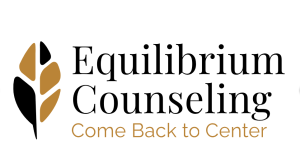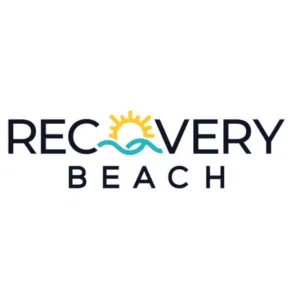Depression is generally treated with medication and therapy. However, there is a new technological advancement that provides relief for people who can’t tolerate antidepressants. This treatment is called Transcranial Magnetic Stimulation or TMS. The FDA approved it for treating depression in 2008.
For those who can’t take depressants or who found it didn’t improve their symptoms, Transcranial Magnetic Stimulation can be an excellent alternative.
New research shows that a person who suffers from depression has a brain that looks entirely different than a neurotypical brain. People with depression have a decrease in frontal lobe activity and an increase in brain structures that create emotion. TMS stimulates frontal lobe activity with an electromagnetic pulse, which is why it can be so helpful for depression.
What Are Some Symptoms of Depression?
If you think you are suffering from depression, there are many indicators. Depression is a complex mental illness with many different types and varying symptoms. Some of the most common symptoms include:
- Trouble with concentration or memory, difficulty making decisions
- Fatigue
- Strong feelings of guilt and helplessness
- Feeling pessimistic and hopeless
- Sleep disturbances like insomnia, early-morning wakefulness, or oversleeping
- Grouchiness and irritability
- Restlessness
- Loss of interest in activities that were once enjoyable
- Changes in appetite, like overeating or appetite loss
- Aches and pains, headaches, cramps
- Digestive issues
- Persistent sad, anxious thoughts and feelings
- Emptiness
- Suicidal thoughts, ideation, or attempts
What is Transcranial Magnetic Stimulation (TMS)?
Transcranial Magnetic Stimulation is a non-invasive way to stimulate the brain. It uses electromagnetic induction with an insulated coil that is placed over the scalp. This treatment focuses on an area of the brain that is responsible for mood regulation.
The coil then generates brief magnetic pulses and passes gently and painlessly into the brain. The vibrations are similar to the type and strength as those created by magnetic resonance imaging (MRI) machines.
What is Repetitive Transcranial Magnetic Stimulation?
When these types of pulses are administered in rapid succession, they are called “repetitive TMS “or “rTMS.” rTMS is a safe and well-tolerated treatment that can cause longer-lasting changes in brain activity. It is suitable for patients with depression who do not respond to antidepressant medications or cannot tolerate their side effects. TMS treatments are now available throughout clinics and hospitals in North America.
Who Is This Type of Treatment Appropriate For?
rTMS therapy is not recommended for everyone. Seeking out a consultation is always a wise decision. Before scheduling a treatment, you should be evaluated by a psychiatrist to determine if rTMS is an ideal option for you.
What is TMS Treatment Like?
The TMS treatment schedule can be intensive. Each session is 20-minutes long and administered five days a week, for seven weeks straight. However, since the treatment is so effective, many patients find that it is worth it.
For those going through the protocol and then find they are successful, their depression will be gone. The following year, there is about a 30% chance of the depression returning, but a 70% chance that it won’t come back. Because of the high success rate, many patients and medical professionals find this treatment very useful.
Some patients feel concerned because the treatment sounds invasive. However, this treatment is not as intense as people think, and many patients don’t feel much of anything.
When magnetic pulses are sent throughout the brain, it stimulates everything from the skin down to the brain. As a result, the scalp muscles can contract, and some may feel this sensation that can feel like tingling.
How Effective is TMS?
Since TMS has been effective for many patients with depression, more research is being conducted for other psychiatric illnesses.
Recently, clinical trials have been studying TMS for psychiatric disorders like autism, ADHD, PTSD, OCD, and anxiety. These studies use pulses with less amplitude so that the pulse is not as strong, but there is more treatment being delivered.
Despite the research still being in its initial stages, the new technology gives medical professionals much hope in treating mental illnesses. Many of these healthcare providers have been able to get their patients off antidepressants to treat their symptoms.
How Much Does TMS Cost?
TMS can cost from $4,000 – $8,000, depending on whether you have insurance coverage. Medicare and Medicaid cover this treatment, as well as other commercial insurance companies. Many of these companies will even pay for treatment again if a person experiences a relapse.
Are There Any Side Effects of TMS Treatment?
Negative effects of TMS occur rarely. However, some potential side effects include fainting, seizure, pain, discomfort, cognitive changes, hypomania, hearing loss, and unintentional current induction in implanted devices like defibrillators or pacemakers.
Can TMS Treat Any Other Conditions?
The FDA has approved TMS to treat other conditions. In December 2013, the FDA approved TMS for the treatment of migraines. In fact, it is known as a Class II medical device under the “de novo pathway”.
Many versions of Deep TMS H-coils in the European Economic Area, have been used for treating Alzheimer’s disease, Parkinson’s, epilepsy, and chronic pain. One review even found benefits for cognitive enhancement in healthy individuals.
If you have been diagnosed with depression or believe you may be suffering from depression, be sure to speak to a qualified medical professional. They can create the right treatment plan for your unique needs.















